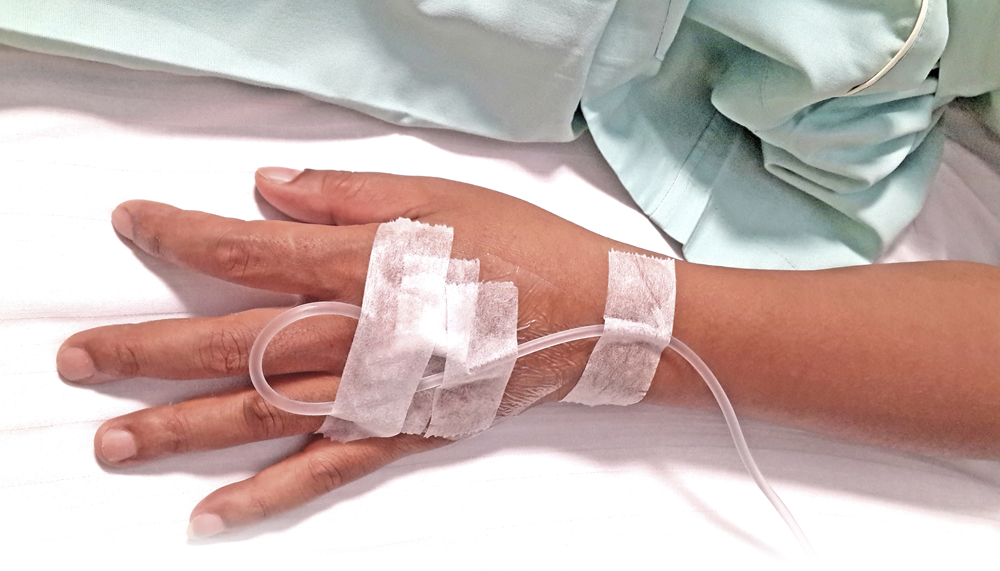Errors in drug administration are inevitable, which only makes vigilance that much more important.
For as long as medications have been given, there have been errors in their administration. Irrespective of policies, procedures and risk-management strategies, their incidence continues – and sometimes with dire consequences. So long as human error is a contributing factor, mistakes will continue.
Whilst the elimination of all mistakes is the goal of professionalism and risk-management strategies, a reduction may be the best that can be achieved in reality. A recent case highlights how a routine procedure, combined with miscommunication, resulted in a catastrophic outcome, despite the experience and competency of the nurse involved.
The background to the case was that patient L was hospitalised for multiple conditions, including DVT and a brain hemorrhage. Patient L was commenced on IV heparin. In the early hours of the morning, the heparin infusion rate was ordered to be increased to 10.5ml/litre/hour and a bolus of 2000 units. At the time of the order, the shift was described as ‘particularly busy’. In fact, nurse A, who drew up the medication, was responsible for the medications of 11 other patients as well. The whole ward had five nurses for 38 patients, and that included a nurse unit manager, who had non-clinical administrative duties to handle. In the early hours of the night shift, nurse A collected an ampoule of heparin and drew up 4 millilitres into a syringe. Nurse A then took the medication order, ampoule and syringe to the NUM, to have her check the dosage. The NUM was on the phone making staffing arrangements for the morning shift. Nurse A’s evidence was that the manager pointed to the medication order, a gesture nurse A interpreted as the NUM confirming the order, upon which nurse A acknowledged the gesture and went and administered the injection to the patient. Tellingly, nurse A did not show the NUM the ampoule from which she had drawn the heparin. The NUM’s evidence concerning this interaction was that when nurse A presented the syringe, she noticed that it appeared to contain a large quantity of heparin and certainly more than the order for 2000 units. The NUM said that she pointed to the medication order to alert nurse A but did not stop or interrupt her telephone conversation. On finishing her phone call, the NUM hurried to find nurse A, who had already administered the heparin.
What the coroner found was that nurse A collected an ampoule of heparin, which she believed was 2500 units in 5ml, and drew 4ml into a syringe based on a concentration she believed to be 500 units per millilitre – or 2000 units in 4ml. Unwittingly, nurse A had drawn from a 25,000-unit ampoule of heparin and, in drawing 4ml, had drawn 20,000 units. The patient died shortly thereafter.
Nurse A explained that it was hospital protocol for two nurses to take an intravenous drug to the patient’s bedside to administer it together and for both nurses to check the patient at the same time. However, nurse A stated that this did not always occur in practice – due to the nurses’ night shift workloads – and that common practice was for two nurses to check the drug and the medication order and then for one nurse to administer the medication to the patient alone. Nurse A stated that she asked the NUM to check the heparin dose she had prepared for patient L, but acknowledged that she should have waited for the NUM to accompany her whilst she administered it.
The coroner sympathetically referred to the human contribution to medication errors.
“Errors are common and … slips are usually caused by failure to monitor a highly routine action and … are much more likely when limited cognitive resources are compromised by haste, inattention, distraction or fatigue,” the coroner wrote. Further, the coroner stated that the medication error of infusing the increased heparin dose “was due to a human error in the settings of systems failure” and that this did “… not imply any lack of care on the part of the individual nurses involved; and accept that they were doing their best in the circumstances, which included a busy shift”.
The coroner made no sanctions against the nurse but did make recommendations concerning colour-coding of labels on different concentrations of medicines.
Little wonder that as part of the AHPRA charter of protecting the community from unprofessional and unsafe practice(s) it has on occasion refused to register – or has de-registered – nurses in relation to issues of incompetency and/or unsafe medication management. This was undertaken in one case in 2012, where a nurse was noted to have caused a number of “near misses” in relation to potential medication errors. Hence, to be unprofessional and a danger does not require an actual medication error with catastrophic consequences.
Obviously, it is absolutely impossible to eliminate all medication errors, as to err is to be human. This axiomatically does not suggest complacency or anything less than striving for zero mistakes. What this case does highlight is that vigilance needs to be at the forefront of nursing and midwifery practice. Time pressures, workloads, familiarity and experience can lull even the most dedicated and committed nurses and midwives into cutting corners. As the coroner wrote, the matter “had taken a tremendous effect on her (nurse A) personally”. As George Bernard Shaw said, “success does not consist in never making mistakes but in never making the same one a second time”, which is equally valid in reference to others’ mistakes and the burden they have had to endure.
Scott Trueman is a lecturer in the school of nursing, midwifery and nutrition at James Cook University.
Do you have an idea for a story?Email [email protected]
 Aged Care Insite Australia's number one aged care news source
Aged Care Insite Australia's number one aged care news source

